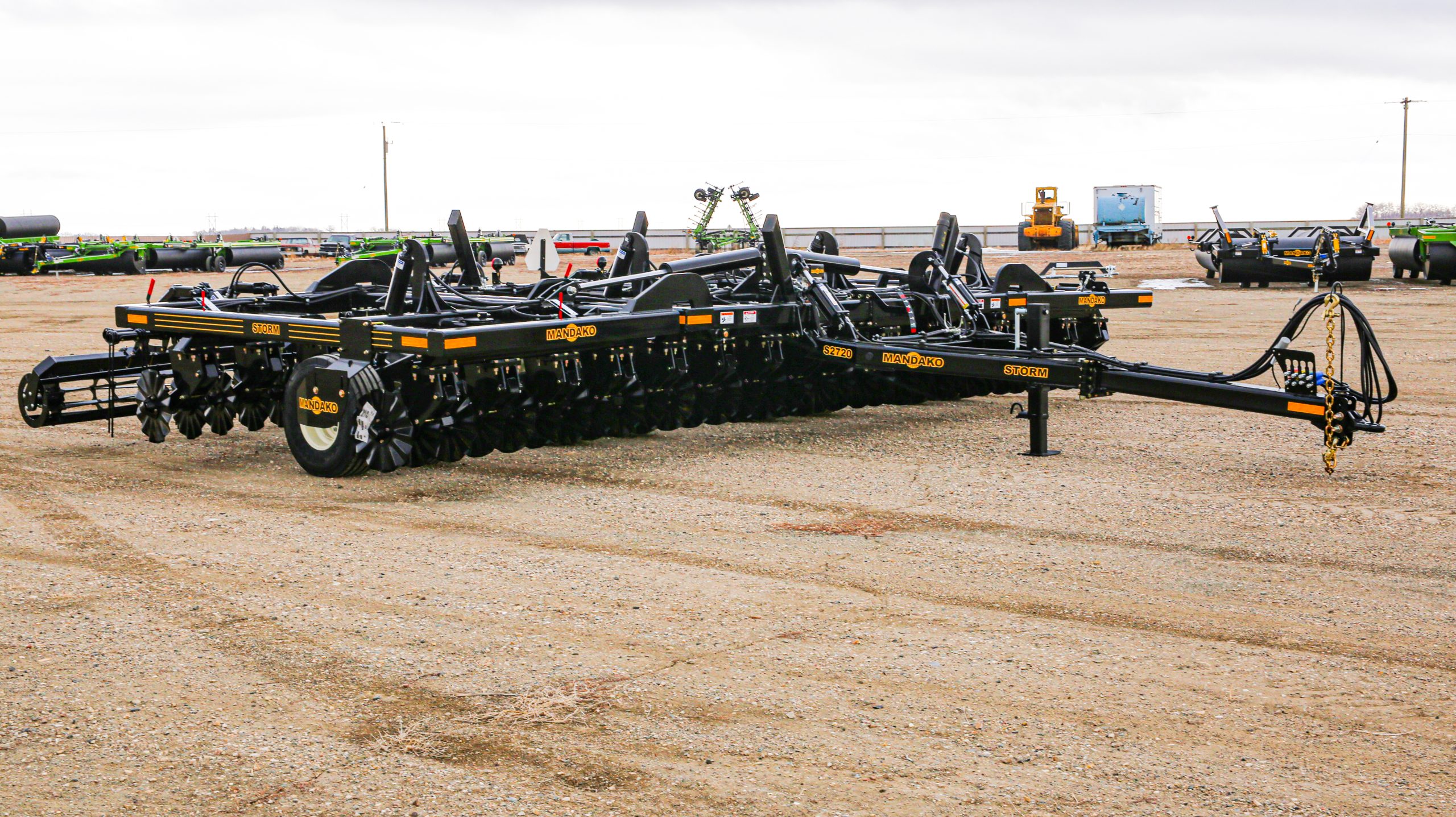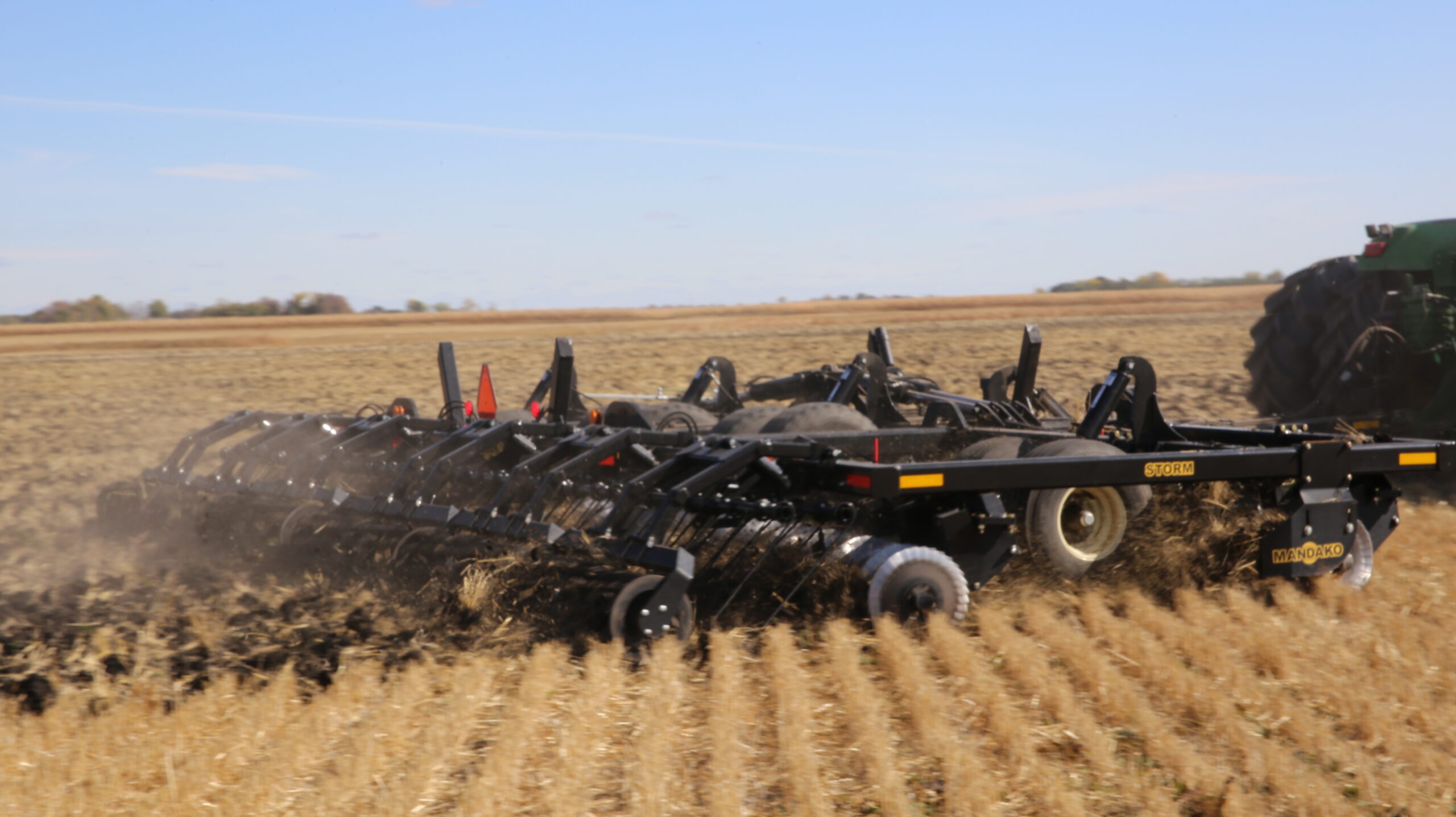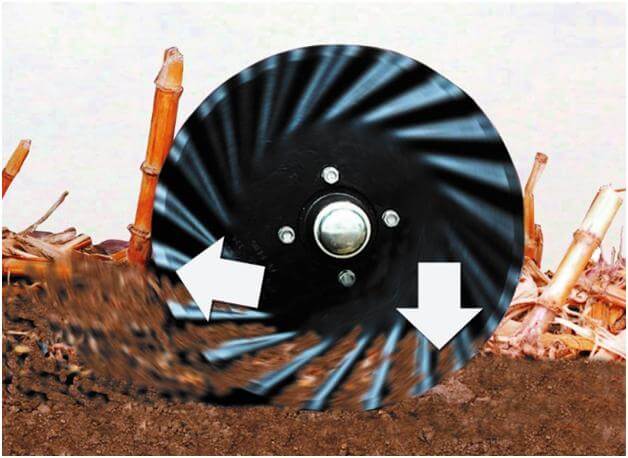
The Benefits of Vertical Tillage: How to Choose the Right Equipment
Understanding Vertical Tillage and Its Benefits
Vertical tillage involves creating vertical fractures in the soil without forming a hardpan. This method leaves crop residue on the field and allows sufficient moisture penetration. The soil becomes oxygenated and retains more moisture, which significantly enhances crop yields.
Selecting the Right Equipment
Choosing the right equipment is crucial for efficiently covering large areas with minimal effort and achieving your dream harvest. The Mandako STORM exemplifies the pinnacle of vertical tillage technology.
Choosing the Best Blades for Effective Vertical Tillage:
- 13-Wave Blade: 20-inch diameter, 6 mm thickness. Ideal for a wide range of vertical tillage tasks, preserving soil structure and promoting optimal growth conditions for all types of crops.
- 8-Wave Wavy/Toothed Blade: Also 20 inches in diameter, designed for heavy residue chopping, improving aeration, and creating better conditions for crop maturity, even in poor soils.
- Samurai Blade with Serrated Edges: This 20-inch blade offers precise cutting, especially effective against tough residues.
Additional blade types are available, so consult with a professional if you have specific needs for your soil type and crop cultivation.
How to Choose the Right Equipment?
When selecting equipment for vertical tillage, consider the soil type, farm size, and your specific goals. What works for one farm may not be suitable for another, given differences in climate and landscape. Professional consultation is recommended if you are new to vertical tillage practices.
Frequently Asked Questions:
1. What is vertical tillage?
Vertical tillage involves using tools that cut into the soil vertically rather than turning it over horizontally. This method prevents the formation of a hardpan beneath the surface, improving soil health and water retention.
2. Why is vertical tillage better for moisture retention?
Vertical tillage leaves soil structure intact and creates vertical fractures, which enhance the infiltration and storage of water, crucial for healthy crop growth.
3. What types of blades are best for vertical tillage?
Blades such as the 13-wave, 8-wave, and samurai serrated blades from Mandako STORM are designed to handle various soil conditions and residue types, optimizing soil aeration and preparation for planting.
4. Can vertical tillage improve crop yields?
Yes, by improving soil structure, increasing moisture retention, and reducing compaction, vertical tillage can lead to better root development and higher crop yields.
5. How do I choose the right vertical tillage equipment for my farm?
Consider your farm’s specific needs, including soil type, farm size, and existing conditions. Consulting with a specialist can help you select equipment that matches your requirements.
Publication Date: 14 May 2024 Estimated Reading Time: 4-5 minutes









